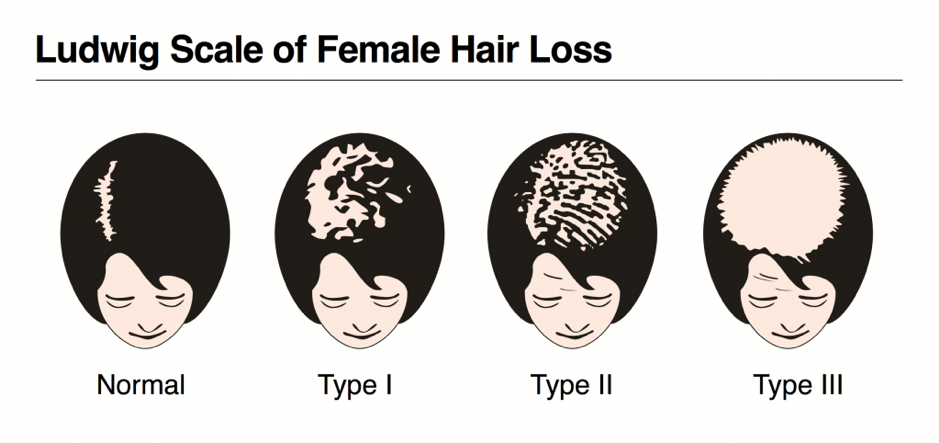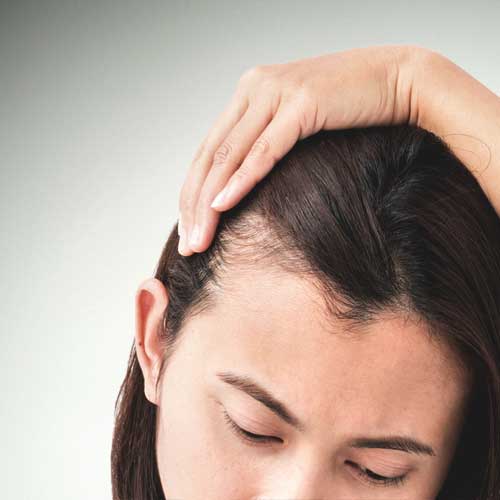Say goodbye to your hair fall woes with help from Hairrich Hair Restore Center, the finest hair clinic in Kurnool. We aim to provide quality services that reduce hair fall and boost hair growth.
Hair loss in women causes, and treatment Nowadays, hair loss and thinning in women is common. Some time due to genetics or certain medical reasons like thyroid etc. Hair loss in women is observed. The question of what can cause hair loss in women attributes to many factors ranging from simple nutritional deficiencies, hormonal changes, or stress due to work or mental situation, etc.
The following section helps you to understand the phenomenon of loss of hair in women and ways to prevent hair loss.
Hair loss in females, these days is the most common problem. Female hair loss could be due to many reasons like nutritional deficiency, hereditary factors, stress, and medical condition like thyroid, hormonal changes during pregnancy and menopause, polycystic ovary syndrome , aging, etc.
Hair loss in women may result in emotional well being, as it impacts the self-image.
Female hair loss can happen at any age and can be due to a variety of conditions and reasons.
Hence, it is important to identify the root cause of the hair loss problem and to correct it in time.
Female Pattern Baldness is an under-recognized entity. Pattern hair loss was wrongly thought to be a strictly male disorder, women contribute up to 40-50% of hair loss by the age of 50. Though symptoms are seen in their 30s and 40s itself. Female pattern baldness is the most common type of hair loss in women. It is a mainly hereditary pattern of hair loss and it most commonly is seen after menopause.
Women look attentively at hair as self-love, pleasure, and identity. Balding in women is often scary. Female pattern hair loss can be devastating may result in emotional well being, as it impacts the self-image. Hence, it is considered to be a common cosmetic and psychosocially distressing condition.
Female pattern baldness has a strong genetic predisposition, as it is commonly seen with a family history of baldness.
Though, sex hormones or androgens are linked to male traits but present in females also in less proportion. Androgens include testosterone, and its derivative is dihydrotestosterone /DHT are thought to be responsible for hair loss. The sex hormones are responsible for secondary sexual features such as axillary or pubic hair. But the same hormone has a reverse effect on the scalp in genetically prone to baldness.
As female pattern hair loss usually becomes visible after the menopause, when estrogen levels become low, suggesting that estrogen may have a restoring effect on hair. Though, the role of estrogens is undetermined.
Hence ageing and menopause play an important role.
Hormones have a role in hair growth cycle and hair loss, thus female pattern hair loss is also seen in conditions with hormonal imbalance such as Polycystic ovarian cysts, menopause, use of birth control pills, androgen-secreting tumors, etc.
Hair thinning is different from that of male pattern baldness. In female pattern baldness:
The hair loss progresses gradually and unlike men, it can rarely progress to total or complete baldness.
There are different scales to measure hair loss in women. The two most commonly used are the Ludwig Scale and Savin Scale. Ludwig Scale measures only the overall thinning, Savin Scale measures overall thinning as well as the density in the hair.

Female pattern baldness is usually diagnosed based on:
Abnormal new hair growth at other body parts like face, chest,Menstrual disturbances. The appearance of new acne, a trichology test or skin biopsy or blood tests may be used to diagnose skin disorders that cause hair loss in some cases. Microscopy examination can be done to check the hair loss related to the structure of the hair shaft.
Hair loss in female pattern baldness is progressive without treatment and is permanent, if not treated. In most cases, hair loss is mild to moderate. The results are slow irrespective of medication and require patience. For a satisfactory result the condition to be assessed with the underlying causes, psychological effects, and the various interventional treatment available.
Minoxidil and supplementary vitamins, minerals and amino acid is the mainstay of treatment for hair loss in females. The topical application of Minoxidil increases blood flow to the scalp that helps to distribute nutrients to hair follicles, promoting hair growth in the affected area. Though, oral Finasteride is also used sometimes, which works by blocking the hormones- 5-alpha-reductase in the body which is responsible for hair loss. Low dose oral contraceptives are given in polycystic ovarian disease.
Other than finasteride and minoxidil medicine there are various procedures like mesotherapy, platelet-rich plasma (PRP) therapy , micro-needling (derma roller) , low-level laser light therapy (LLLT) to treat hair loss. As early and right intervention during the affected growth hair cycle can slow or stop the male-pattern hair loss
Platelet-rich plasma (PRP) therapy for hair loss, involves the infiltration of concentrated growth factors, which are extracted from the blood of the patient and then transferred back to the scalp of the same patient.
Micro-needle therapy: During the micro-needling for hair loss treatment, thousands of tiny holes are created in the patient’s scalp with the help of a derma roller. These tiny holes result in the release of intrinsic growth factors at that site to stimulate hair growth. Micro-needling increases the blood circulation and helps for quick absorption of medicine such as minoxidil or finasteride or serum. Hence it works as a very effective supportive treatment.
Low-level laser light therapy (LLLT): Here the non-coherent light sources consisting of filtered lamps or light-emitting diodes (LED) are delivered to the hair to stimulate the hair follicles for faster growth. LLLT for hair loss emits the wavelength of infrared light is 630-670 nanometres. This treatment is approved by the US FDA for hair loss problems.
Mesotherapy: Here the growth peptides, stem cell extract, minoxidil, and various other growth factors are delivered locally to our hair with a special mechanical meso-gun.
However, all these interventional procedures along with medical treatment can provide excellent results in female-pattern hair loss provided the patient to follow regularly.
Surgical restoration can be done in select patients, though it is more uncommon than in men. Hair transplantation is a procedure where the permanent hair follicles from the back and sides of the head (donor area) are relocated at the thinning or balding areas of the scalp (receipt area). This is a lifelong sustaining process because the hair follicles taken from the back of the head are genetically resistant to baldness, regardless of where they are relocated to. This is the most sought after procedure today to regain one’s lost hair.

